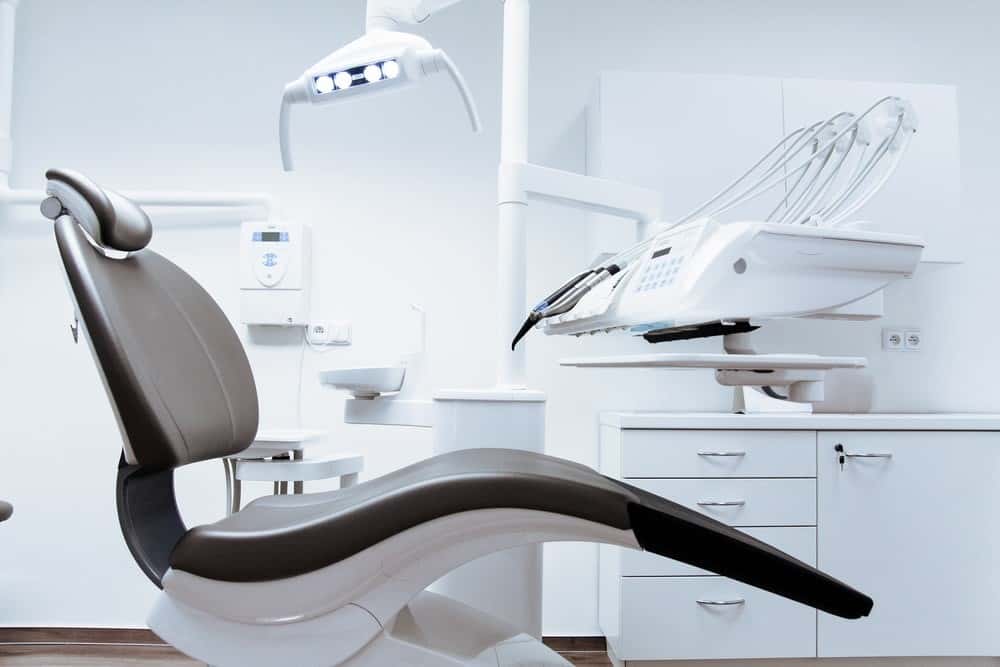If you want your dental practice to grow, you need dental marketing strategies.
To successfully gain new patients and maintain relationships with existing patients, knowing how to reach them and become the most visible, reliable and trustworthy practice is essential. With patients researching online sources to unearth the most established dental practices, it is vital to focus your efforts where they are likely to reap rewards.
Though dental marketing strategies might seem like a daunting task, you have all of the methods at your fingertips. You already know what your practice provides, so it’s time to utilise that and market it to potential patients.
Still daunted? Read ahead to 15 simple marketing strategies that guarantee success.
1) Patient referrals
Patient referrals are arguably still the most effective marketing method for dental practices. How many times have you gone to a restaurant your friend has recommended? It’s no different for dental practices. Word-of-mouth referrals are successful because patients are hearing from a source they trust, making them more likely to actually consider their friend’s recommendation.
Referral bonuses also serve as an incentive for this effective method. Use your social media, email marketing and ads to advertise a discount on dental visits to market to an even wider audience than traditional patient referrals would.
2) Establish your brand
What is it that sets you apart from your competition? Branding is an important factor in patient perception. Consistency is key, so maintaining the same colour schemes, tone and message across platforms will be helpful.
It is imperative that you consider what message you want your patients to see. The association they have with your dental practice is what will cause them, hopefully, to choose your dental practice.
3) Research your competition
Ever heard of the saying “anything you can do, I can do better”? When you research your competition, you’re making yourself aware of what a potential patient may be weighing up against your own practice. If you’re not aware of what other options patients have, then you cannot adjust your services accordingly.
Do they offer a discount that you could potentially exceed? Is their website effective for customer service? By adapting your own marketing to suit the competition, you’re staying relevant and ahead of the competition.
4) Identify your target audience
You’re likely aware of your target demographic. Cosmetic dentistry isn’t going to appeal to a mass audience, for example, and must be marketed in a way that reaches the intended audience.
You can advertise your dental practice as much as possible, but no matter how much money you put in, if you aren’t tailoring it to the people likely to pay for the services you offer, you won’t gain any new patients.
Target audience is also important when considering your branding and how you advertise across platforms. This links the motive of your marketing to the actual method. If you’re not tailoring your dental marketing strategies, your efforts will be in vain.
5) Advertise benefits, not features
We’re in a society that sees hundreds of ads every single day, and we’re most likely aware of it. Don’t make your dental marketing strategies revolve around your “ultra-modern dental practice” or “top of the range dentistry”. Make it about them.
Patients want to be marketed to, not at. The benefits of your services are what patients want to know about. A bright, healthy smile is what appeals to a potential patient.
By marketing an appealing experience rather than the procedure, patients are given the chance to consider what you can do for them. That is the primary focus of a dental marketing strategy.
6) Community involvement through social media
Social media can serve as a year-round source of information for potential patients and existing ones. By having an easily accessible source of information available, you have the ability to communicate with your patients and get feedback from them.
Facebook is a great platform for this, as patients can leave reviews if they wish to, making it easy to create your own online dental community.
Not only can social media update patients, but it is also the first impression that a lot of potential patients get of your practice. Seeing a thriving community is bound to leave a positive impression, at the very least. See this post on how to create an awesome dental Facebook page for inspiration.
7) Make your website user-friendly
Other than social media, your website is likely one of the first places potential patients will look. The last thing you want is to lose potential patients because your webpage isn’t mobile-friendly, or because of agonising loading times due to excessive pictures on your website.
Your brand message and tone should be consistent and professional across the website, and it should be easy to navigate.
To get the most out of your website, you should probably consider how vital the keywords you use are- but we’ll get to the specifics of that later. The content should be user-friendly, secure, feature a variety and not be a complete eyesore. The majority of patients are accessing your website from a smartphone, so you should adjust your website accordingly.
8) Email marketing
For healthcare professionals, email marketing is still an effective method for communicating with patients. As a dental marketing strategy, it certainly has its benefits. Email marketing can include dental practice offers, appointment reminders and simple communication.
You can use emails for online scheduling, communication and even content marketing such as seasonal-relevant articles on dental health. If you’re stuck on where to start, read how to create your own newsletter for your dental practice.
9) Consistency
Your dental marketing strategy should be consistent; if you’re active on social media then make sure your posts aren’t randomly spaced out, for email marketing it should be every so often. Patients don’t want to be bombarded with advertising, and they don’t want to go searching for your services and be faced with reposts from 2017.
In order for you to keep patients coming back, then you have to ensure that you continue to appeal to them. This requires consistency.
When potential patients feel like your message/services/brand isn’t consistent, they will not consider you a viable option. Scheduling software such as Hootsuite can help if you’re scatter-brained about scheduling posts. If you’re organised enough to keep to your own posting schedule, great! It doesn’t have to be down to a fine science, just keep in mind that nobody likes inconsistency.
10) Ask for reviews
Nobody likes the feeling of not only making a bad decision but having to pay good money for it. Consumers avoid this feeling by checking reviews from reputable sources, ensuring that they are getting the best services possible for their money. Reviews from a Google My Business (GMB) page or Yelp can be just as effective as word-of-mouth referrals.
Asking for reviews on any platform means that potential patients can be put at ease by patient testimonials. User-Generated Content (UGC) is still trusted more than content generated by companies to attract new patients.
11) Create blog posts for SEO
Content can be the boost your website needs to rank higher in Google. I’ll try to simplify the purpose of SEO as much as possible to avoid potential panic. SEO, ‘search engine optimisation’, in the most basic terms, refers to the editing of your website content/code in order to rank higher in Google search results.
Without causing stress by going into coding spiel, there are a few things you can do to optimise your website. One of them is writing content containing keywords that you know your target audience is searching, acting as a source of information to them. This also gives Google enough keywords to indicate your website as a reputable source, therefore ranking it higher.
12) Improve your local SEO
So, we’ve already gone over the basic summary of SEO. You want to make sure you’re one of the first available dental practices that patients see on Google. So, you need to consider that your practice is obviously only valuable to those that can easily access it. You don’t want to try ranking on Google for “dental practice”, but you might want to rank for “dental practice Manchester”.
Remember when I said most patients are using smartphones when researching potential dental practices? Well focusing on local SEO means that Apple users will most likely see your practice first when voice searching using Siri for a ‘dentist near them’.
13) Create video content
Nobody wants to read ten pages of text about your practice, and most social media platforms such as Facebook and LinkedIn favour video posts more. This is an opportunity to become more personable to your patients, show off your practice and staff and convey the exact message you want to. The healthcare industry is turning more to video advertising, and you should follow suit (remember what I mentioned earlier about researching your competition?).
A good way to start is Youtube, as it is the largest search engine behind Google. Need help? Have a look at how to set-up your own dental Youtube channel.
If you want to create a genuine connection, allowing patients to see the people they are receiving services from is a very valuable step to take. It gives patients the opportunity to link a face to your dental practice and lead to more referrals.
14) Remarketing campaigns
Though a lot of dental marketing strategies revolve around gaining new patients, existing patients are an easy source of revenue for your dental practice. Emailing patients for follow-ups, reminding them of services they can get, or even new offers that you have.
Maintaining relationships with existing customers can get them to refer you if they hadn’t before. It also makes them feel like they are still valued by you.
15) Focus on keywords
As already mentioned, if you offer specific services, you should mention them throughout your website and social media. Keywords are also vital to SEO, and you should put an emphasis on local SEO. This includes words such as emergency, for example. “Emergency dentist Manchester” is okay, but adapting to suit what patients are actually searching is better. “Emergency tooth removal”, or “emergency dentist open on weekends”.
If you offer emergency services, then it is important you benefit from this by using appropriate keywords. If not, then ensure that you are using keywords that directly relate to your services throughout your website.
Conclusion
It takes dedication and consistency, but these strategies can easily be utilised to full effect. If you take the time to use the tips mentioned above, you’ll undoubtedly be ahead of where you were before. If you’d like more content similar to this, why not check out 15 Dental Patient Marketing Strategies?
Are the methods listed above are too time-consuming? There is always the option of hiring a professional marketing team. Why not book a phone call with us on 0330 133 0635 for help? Or you can fill out our form.






